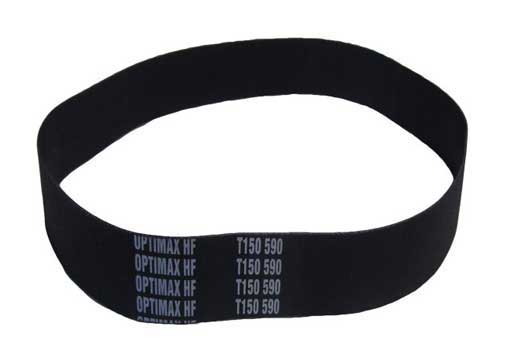- Hydraulic Rod Seals
- Hydraulic Piston Seals
- Hydraulic Wiper Seals
- Pneumatic Rod Seals
- Pnuematic Piston Seals
- Guiding Elements
- Static Sealing Elements
- Rotary Shaft Seals
- Axial Face Seals
- Bonded Seal
- End Cap Seal
- Mechanical Seals
- Single Spring Mechanical Seal
- Apv Pump Seal
- Famous Pump Seals
- Metal Bellows Seals
- Auto Cooling Pump Seal
- Flygt Pump Seal
- Inflatable Seals
Our Brochure
View our new brochure for an easy to read guide on all the products we offer.
FLAT BELT
Flat belts are designed for light-duty power transmission and high-performance conveying. They are best-suited for applications with smaller pulleys and large central distances. Flat belts can connect inside and outside pulleys and can come in both endless and jointed construction. They have a high power transmission efficiency, are cost effective, and are easy to use and install.
CONSTRUCTION
Three common designs of flat belts include:
Fabric ply belts consist of several plies or layers that are made of cotton or synthetic fiber, with or without rubber impregnation. The number of plies determines the belt thickness that will help determine the minimum pulley diameter for the drive.
Fabric cord belts are constructed with multiple cords made from cotton or synthetic fibers such as rayon, nylon, plastic, or Kevlar. They are incased in rubber and covered with a fabric/runner covering. This type is generally classed as a heavy-duty flat belt, used for high speeds, small pulley diameters, and shock loads. Steel cables can also be used as they have higher capacity and lower stretch than fabric cord flat belts.
Synthetic flat belts are made from nylon. Nylon offers flexibility, extremely high tensile strength, and operates effectively at high rim speeds. The belts are thin and they may consist of several plies of thin nylon bonded together to form a tough but flexible flat belt.
Flat belts generally have a traction layer made of oriented polyamide with two covers of elastomer leather or textile material and one intermediate layer of fabric on each side. The traction layer absorbs the forces exerted on the belt when power is transmitted. The friction cover ensures that the peripheral force acting on the belt pulleys is transmitted to the belt and vice-versa.
SPECIFICATIONS
Specifications that are important to consider include: belt type, belt width, and initial elongation. If any of these factors change, the belt must be recalculated.
Power transmission belt material types include polyester, aramide, and polyamide.
Polyester is the most common material due to it price-to-value ratio. It supplies a versatile belt that can be used in a wide range of operating temperatures with low energy consumption, high flexibility, and reliable performance.
Aramide is a strong choice for long belts due to the short take-up and high accuracy for number of revolutions (RPM) and belt speed. It is highly flexible, simple to join, has a high E-modulus, and low energy consumption.
Polyamide is reliable and has a long service life. It can work in a variety of conditions and functions well in extreme environments with intermittent overload and high temperatures. Polyamide is shock resistant and grooves enable high grip.
Belt width is simply the width of the belt. The tensile force for 1% elongation per unit of width after running-in (N/mm), k1% a.r.i., is the decisive value for calculating the required belt width and the resulting shaft load after belt relaxation
Correct and sufficient initial elongation is a pre-requisite for trouble-free operation of power transmission flat belts. The calculated initial elongation (ε0) must be observed. In systems with a tensioning pulley, the pulley is placed on the slack side and pushes the belt to provide the required initial elongation. In systems without a tensioning device the required initial elongation is determined by reducing the length of the shortened belt length, which is the fabrication length. Always use the calculated initial elongation provided by the manufacture when installing a belt.
When selecting a belt drive it is important to consider the speeds of and power transmitted between drive and driven unit, suitable distance between shafts, and appropriate operating conditions.
The equation for power is:
Power (kw) = (torque in newton-meters) x (rpm) x (2∏ radians)/(60 sec x 1000W)
Flat Belt Manufacture And suppliers in Dubai, UAE
APPLICATIONS
- Automotive
- Fluid Power
- Electronics
- Hydraulic Fittings
- Valves and Pumps
- Earthmoving & Construction Equipment
- Power Generation
- Instrumentation
- Filtration
- Hydraulic Cylinders
- Plumbing Products
- Petrochemicals
- Chemicals & Fertilizer Plants
- Pharmaceuticals
- Pneumatic Cylinders
- Dairy/Food Processing

